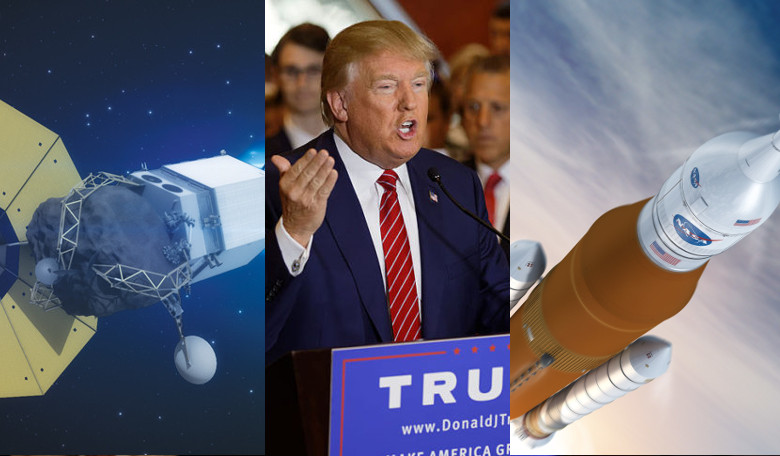As President Obama steps down today and gives way to the new political powerhouse of the 45th President of the United States of America, Donald Trump, what did Obama see as success in regards to space-related activities and what is on the agenda for Trump’s new Administration?
In the weeks leading up to todays inauguration President Obama directed all of his Cabinet-level appointees to prepare "exit memos" on progress made during his Administration and what needs to come next. NASA was not able to prepare one directly as the National Aeronautics and Space Administration is not a cabinet-level agency, however the White House Office of Science and Technology Policy (OSTP) did prepare a list of accomplishments that NASA and other government science and technology organisations have achieved. These included;
- extending the International Space Space (ISS) to 2024, commercial cargo, and progress on commercial crew;
- supporting the Journey to Mars and a robust U.S. commercial space market, including continued development of advanced space technology for life support and solar electric propulsion, collaboration with industry to develop deep space habitats, and initiating efforts to allow the private sector to add their own modules to ISS;
- advancing space science through NASA, NSF and the Department of Energy (DOE), with shout-outs to the Kepler Space Observatory, the Curiosity Mars rover, the New Horizons mission to Pluto, Juno, and the James Webb Space Telescope (plus NSF's ground-based Atacama Large Millimeter Array and the NSF/DOE Large Synoptic Survey Telescope);
- enhancing prediction of and preparedness for space hazards, notably Near Earth Objects (NEOs) and space weather; and
- harnessing the small satellite revolution.
At present, it is too early to tell what official stance the new administration will adopt as their space policy and how future funding will affect NASA. Perhaps some indication can be gleaned from the Restoring American Power plan outlined on the website of Senator John McCain who serves as Chairman of the Senate Committee on Armed Services.
“For decades, the U.S. military has assumed that space was a sanctuary. No more. Near-peer competitors such as Russia and China are developing military capabilities explicitly to deny U.S. forces the use of space, including by targeting our satellites. This space threat has developed with alarming speed. And yet, during the same time period, the Department of Defense has significantly reduced research and development dedicated to space systems, dropping from $5 billion to less than $1 billion over the past six years (Fiscal Years 2009 to 2016).”
Is defense of the US where NASA’s funding could be sidelined to? Perhaps not completely as last October, Robert Walker and Peter Navarro – both of which are senior policy advisers to the Trump campaign – wrote that “NASA should be focused primarily on deep-space activities rather than Earth-centric work that is better handled by other agencies.” The agency, they said “has been largely reduced to a logistics agency concentrating on space station resupply and politically correct environmental monitoring,” I.e issues affecting climate change.
Their statement also echoed that of Senator John McCain, as they added, “While the American government’s space program has suffered from under-investment, both China and Russia continue to move briskly forward with military-focused initiatives.”
While some speculate that projects geared towards aiding a mission to Mars, such as the Asteroid Redirect Mission (ARM), a program to send astronauts to visit an asteroid by the 2020s and the Space Launch System (SLS), the rocket Congress instructed NASA to build in 2011 will be first in line to see the Exit door, a trip to the Red Planet is apparently still on the cards.
In December of last year, the United States Senate unanimously passed the NASA Transition Authorization Act of 2016, which was supported by Senator Ted Cruz, that would require NASA to develop a strategic framework for human space flight to Mars, as well as developing propulsion technologies intended to reduce travel time to Mars.
Mars, it seems is still on the agenda, and possibly so too are solar-system missions such as searching for signs of life in the oceans of Jupiter’s icy moon, Europa, if reports by Texas congressman Lamar Smith, chairman of the House committee on science, space, and technology and an early Trump ally are to be believed.
It would appear then that not all is lost. Nonetheless, speaking at a press conference last year on the likelihood of whether the James Webb Space Telescope (JWST) would remain unscathed as President Trump takes office, NASA Administrator Charles Bolden is reported as saying, “I think anybody would be crazy to tell you that anything survives over a transition."











